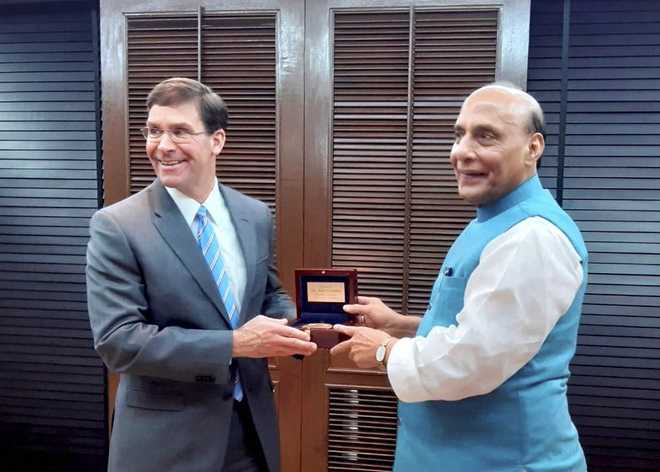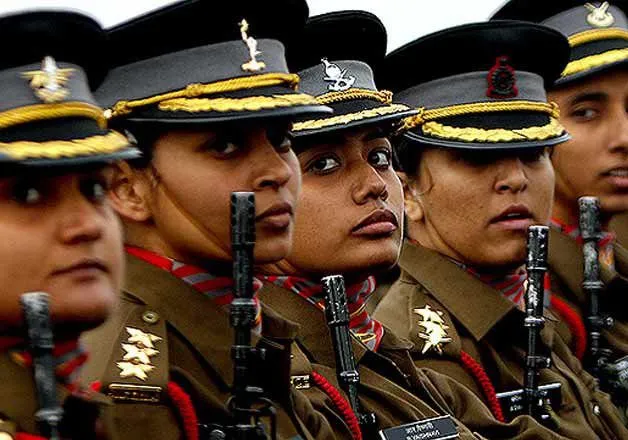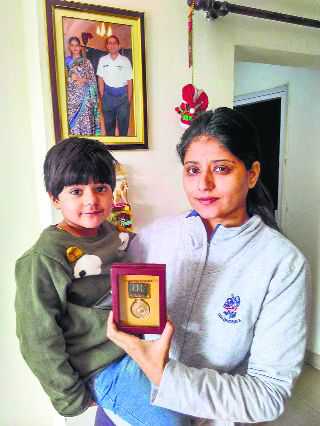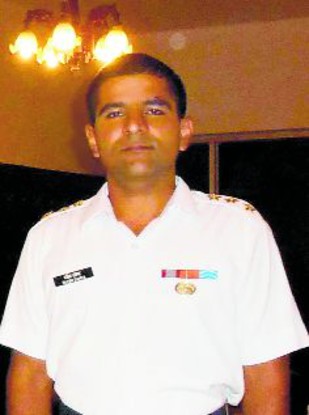A good read. It transcends time and gets one into nostalgic memories of dinner nights, supper nights and guest nights in defence academies and officers’ messes.Tapshi is daughter of Maj Gen Deepak Dhanda.
Pineapple-cheese-cherry on a toothpick, too-thick rajma, and sweet cold coffee. Tapshi Dhanda finds the predictable uniformity of army mess food around the country a comforting anchor to life on the road.
I dunked three fingers into my father’s clear, fizzy drink while he chatted with a fellow officer at an army mess in Ambala. I reached for the small, pale-white, perfectly round onion that sat at the bottom of the glass and it bounced ever so slightly a few times, before I caught it and popped it whole into my mouth. It was tart. Vinegary. A bit salty. Curious, I took a sip of the drink and remember my eyes widening as I licked my lips. What was that! The year was 1994 and I was six.
I later learnt it was a gin cocktail, made army-style:
1 peg of gin
Half of that volume of lime cordial
Soda
A pinch of salt
Two drops of bitters
A cocktail onion or two
I never forgot that first taste. I still look for it in every bar I visit, but I’ve only ever found it in an army mess; in fact, I find it every army mess that I visit. Over the years and across the country, I’ve found it in a mess in Baramulla, Deolali, Mhow, Secunderabad, Ahmedabad, Pune, Shillong, Jalandhar, and Delhi. And once at a retired army officer’s home in Zirakpur, even there, made perfectly.
As a child, I believed the world operated like an army mess — everything had order, parties have dress codes, different cuisines demand their own cutlery, and gin is drunk with bitters and cocktail onions.
While the world may not in truth, work like this, every army mess in the country, reliably, does.
I’ve often tried to decode the ‘sameness’ that is present in the army, achieved almost effortlessly. This sameness was most apparent to me in the food that army messes served across stations in the country. I found it both fascinating and comforting that no matter which part of the country I was in, the food in the mess there tasted like food in any army mess anywhere. I began to reason that perhaps, like most things in the army, food is a matter of tradition and precision – neither of which is achieved by introducing change.
An army mess, home base for a regiment and its officers, is a magnificent institution whose walls are lined with glimpses of the operations of that unit, photographs of those who lead and serve the regiment, and mementos of valorous victories. An army mess is also where (dining) officers eat and stay. Every mess has dining and non-dining members – the former includes unmarried officers or those whose families are not in the station, while the latter comprises of officers posted in the station with their families. The mess caters for daily breakfast, lunch, evening tea, drinks and dinner for the dining members. On Sundays, breakfast and lunch are replaced by brunch, chhole bhature or ildi-dosa, complete with three types of chutneys and a thick, tangy sambar.
The menu in an army mess is set, not à la carte. The everyday menu usually includes two vegetables or a vegetable and meat dish, a dal, chapatis, rice, green salad and dessert or fruits. If it is a continental menu, expect macaroni, roast chicken, baked beans, garlic bread, dinner rolls, Russian salad and pudding. And on the rare days that a fauji will make an à la carte order, it will most certainly be anda bhurji and paranthas — nothing makes him happier.
As a child, before I understood the whys and hows of eating in an army mess, I would ask for my curry to be served in a bowl. The steward was always thrown off; he would pause, restrain his confusion, then return with one that was somehow never the right size. I noticed that nobody else ever asked for a bowl! You see, there is no concept of using a bowl for curry in an army mess. The dals and gravies are a thick-ish consistency on purpose. A no-bowl policy is essentially a no-fuss policy, so one can stand and eat if one needs to socialise, and one always needs to socialise in the army. It also prevents the cacophony of clanging and scraping that children and cutlery almost inevitably produce.
All chefs and stewards in the Indian army receive their training at the Army Service Corps (ASC) Centre in Bangalore. This has been the case for nearly 14 years now, before which the training centre was located in Gaya, Bihar. While there was a shift in the base, there has largely been no change in curriculum.
Chefs and stewards go through three levels of training. The 6-month long Level 1 course for chefs teaches them the basics of cooking and hygiene. Those who excel in Level 1 go on to become mess chefs and are immediately enrolled into a 3-month Special Training course where they learn to cook different types of starters, soups, mains and desserts that fall under Indian, Continental and Chinese cuisines. After the completion of the Special Training course, they are ready to return to their respective regiments, and join army messes situated across the country.
Sometime between 2-10 years of their tenure as a mess chef, they return to the ASC centre for training at Level 2 and 3. Each of these courses lasts 28 days, and teaches the chefs more about Continental, Chinese and regional Indian cuisines. Nearly every mess chef in the army can turn out dosa, sambar, biryani, noodles, fish curry, kadhi and rajma with the same amount of confidence, if not skill.
The stewards, in a similar training drill, are taught skills related to steward duties and responsibilities — how to make basic cocktails and mocktails; the many ways of folding a napkin; knowledge of cutlery and glasses, along with each specific purpose; how to serve beverages (always from the right) and food (from the left); whom to serve first (always the lady); how to set a table for an Indian, Continental or Chinese meal; nuances on the placement of cutlery if an officer wants to be served, is waiting for his senior to finish, or is done eating and hence has ‘closed the plate’, and so on.
Some of the most important lessons shared between the chefs, stewards and their instructors are about the formal parties that are organised every so often in an army mess. The quintessential example of elegance, tradition, order and precision, formal parties in the army are all the charm one needs to experience to be mesmerised by this life. The menus for these parties are curated with thought, the dishes named with ingenuity and the tables laid out with skill. The pristine white china is framed with a delicate gold border and, in some cases, stamped with the regiment monogram. The glasses are crystal. The menu is often continental; a tradition that was started during the British rule for the simple reason that it’s the least messy cuisine to eat with cutlery. Everyone closes their plate when the senior most officer is finished eating. And finally, dessert is served.






























































































































